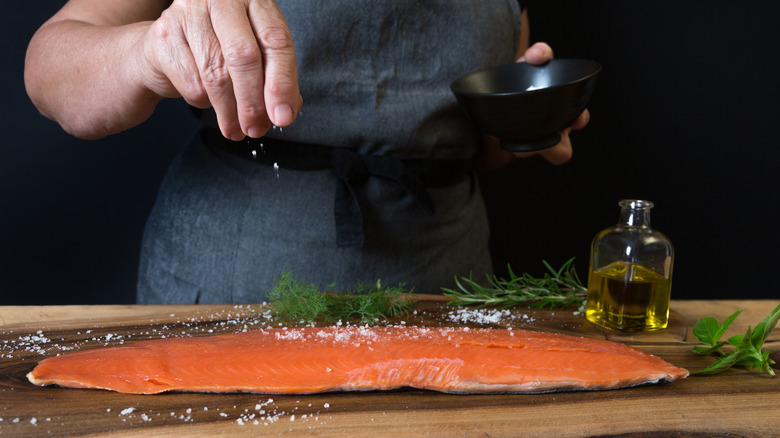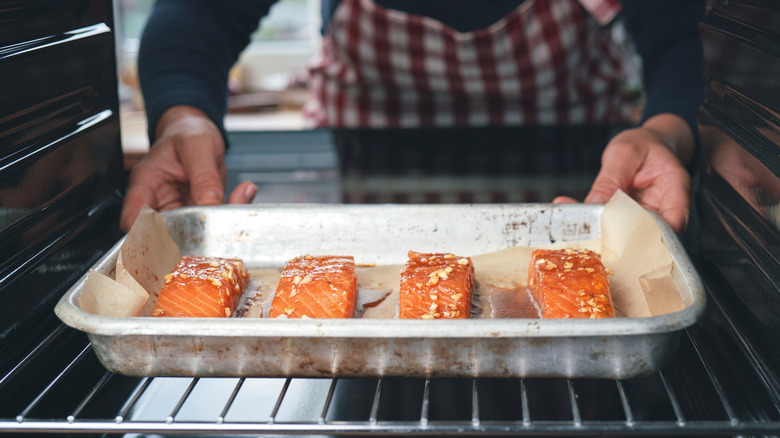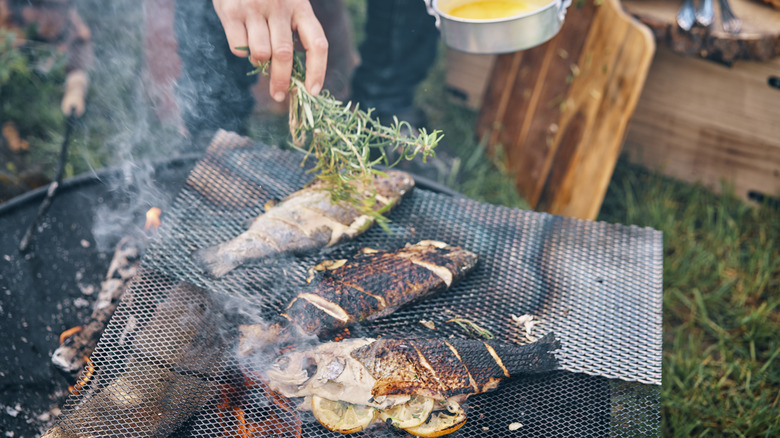Why You Should Always Add Sugar To Fish, Canned Or Fresh
If you've ever prepped chicken or beef, you'd remember that one of the first steps you should always take after pulling them out of the packaging is giving them a hearty sprinkle of salt and pepper. It's a classic trick to amp up flavor a little bit before putting them on the heat to cook. The same thing also goes when prepping for fish recipes, but instead of salt, you should season it with the polar opposite of the thing — sugar — for both canned fish and fish fresh off the market stand.
It may sound a bit strange, but trust: You'll want to give this tip a shot. Besides drawing on its sweetness to balance fishy flavors, sugar can also make your fish filet cook better in the pan by caramelizing and helping the skin of the fish get crispier without burning. (Great news if you're planning to make fish and chips, for example!)
What exactly does sugar do for fish
If you've always disliked the intense fishy taste that you get from a fresh cut, then a sprinkling of sugar will help you clear some of that away. The sweetness will overpower much of the fish-funk, giving you a tastier and more enjoyable dish. (This is also why condiments like tartar sauce, with its sweet tanginess, are often paired with fish.)
But there's more to it than just masking the flavor. Sugar works wonders on the texture, too. When you cook fish, it takes quite a bit of heat for it to develop that golden brown crust we all love — around 300 degrees Fahrenheit, to be precise. However, sugar caramelizes at a lower temperature, around 200 degrees Fahrenheit. So, by adding sugar, you're essentially jumpstarting the browning process, giving your fish a crispy exterior with less of a chance of the fish overcooking. Plus, since the fish spends less time on the heat, it stays juicy and flavorful inside, too.
Works for both canned and fresh fish!
You can count on a touch of sugar to uplift the flavor of your dish whether you're working with canned or fresh catches. For canned fish, which is often packed in water, simply add about half a teaspoon of sugar for every 5-ounce can, as recommended on the show "Cook's Country." This will give you the promised sweet taste that'll purge out some of that fishy flavor.
Now, when it comes to cooking fresh fish, it's a bit different. Unlike thick cuts of meat, fish requires very little direct heat to cook through. For a delicious crust, sprinkle about half a tablespoon of sugar on just one side of the fish. When cooking in a pan, place the sugar-coated side down against the hot surface. The direct heat will caramelize the sugar, giving you that crunchy crust you've been hoping to get from the start. There's no need to flip the fish — once it's cooked through, transfer it to an oven at 425 degrees Fahrenheit to cook the rest of the way using gentler indirect heat. Now, take a bite and see how you like it. Who knows, it might just become your new favorite way to prep fish.


